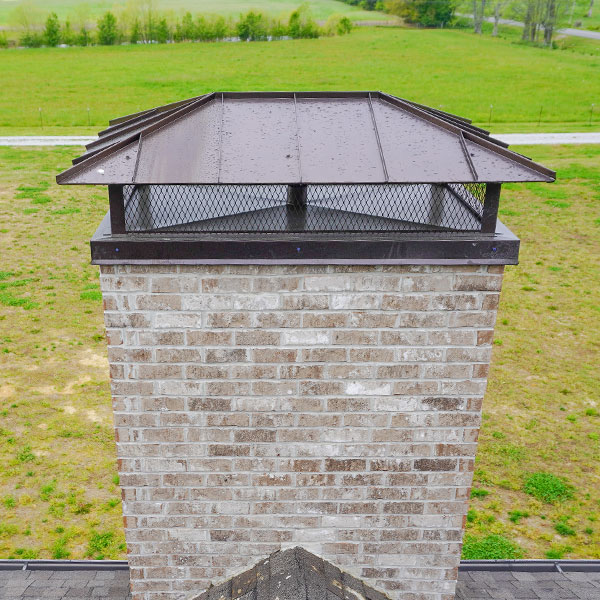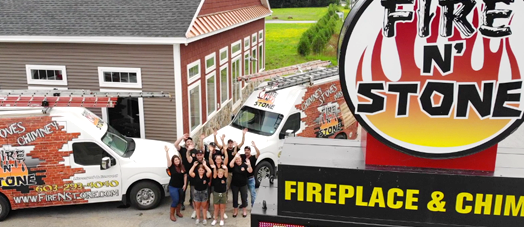5 Components that Protect Your Chimney
Keeping a chimney safe and fully operational is a big job. Fortunately, you don’t have to do it all yourself. Properly built chimneys come with five unique components whose job is to protect your chimney from things that can harm it. Let’s look briefly at each component.
1. Chimney cap 
Full-width chimney caps cover the entire top of the chimney. Their job is to keep water from getting into the flue opening and keep water out of any cracks in the concrete chimney crown.
Flue covers, sometimes referred to incorrectly as chimney caps, are covers over the flue opening only.
Major interior chimney problems can result from running your chimney without a chimney cap or with one that’s severely damaged. If water penetrates the chimney crown, freezing and expansion can cause the concrete to eventually break apart (see below).
2. Chimney crown
The purpose of the chimney crown is to cover and protect interior areas of your chimney as well as the bricks and mortar directly beneath the crown.
Without a crown, rain and snow would easily fall down into the chimney system, causing rot, decay and mold. The same things can happen if your crown is seriously damaged.
A proper chimney crown is built with a slant that causes water to run off it. A slight overhang allows the water to fall onto the roof.
 3. Chimney flashing
3. Chimney flashing
Chimney flashing is the material that seals the space between your roof and exterior chimney. Typically installed with two pieces – an L-shaped piece and then a flat piece that covers the top gap of the first piece – chimney flashing protects both your chimney and your home.
Water that moves through the above-mentioned gap can start a cycle of damage to unseen masonry areas of your chimney. It also can cause rot and decay in adjacent building materials of your home.
Lastly, water in hidden areas can lead to a mold outbreak, which can threaten the health of people and pets living in the home.
4. Chimney liner
Your chimney liner is in place to protect the masonry structure of your chimney. Most liners are made of stainless steel, clay tiles or a poured-in-place compound.
Liners keep intense heat away from interior masonry and vulnerable home building materials. Liners also keep smoke from moving into parts of your home and prevent the acids in built-up creosote from damaging the masonry.
Finally, a properly installed chimney liner will be of the correct size to efficiently and safely draft smoke out of your fireplace.
5. Fireplace damper
Dampers open to allow a full draft during a fire, and then they close to prevent an exchange of air between your home and the outside world.
Over time, dampers can become rusty or caked with creosote and soot, causing them to not open and close fully. This can lead to a number of obvious problems.
Dampers also can become warped after years of use.
Keep your chimney in great shape
Fire N’ Stone of Tilton, NH, serves the entire Lakes Region of New Hampshire with the services you need for a safe and efficient chimney. We provide chimney inspections, repairs, component replacements, chimney rebuilding and chimney cleaning.
Get all your chimney issues solved by calling the experts at (603) 293-4040.





